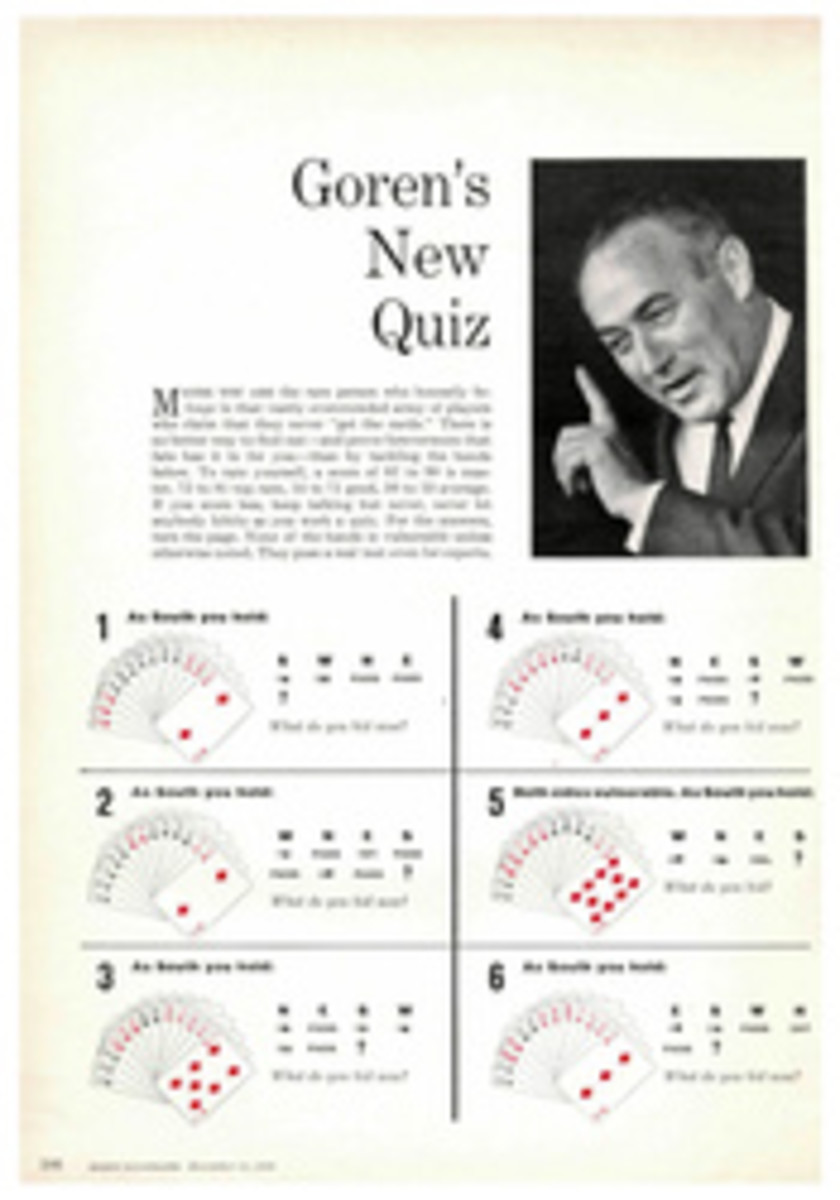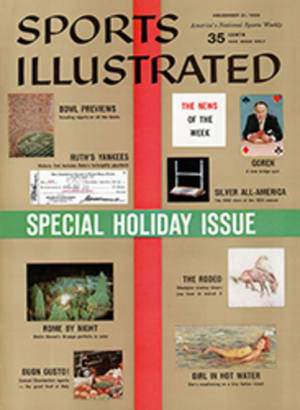
PETE SHOWS RUGBY A TORPEDO
Even Hollywood might hesitate to put on film the story pictured here on the left in which a handsome young American football hero in his very first year at Oxford is shown as he helped to win the annual rugger game against Cambridge. "What nonsense!" the critics would say. After all, only five Americans have ever made the Oxford Rugby varsity and none in their freshman year.
Yet the astonishing truth was that among the 58,000 Britons and Americans gathered at Twickenham Rugby Football Stadium to watch the 78th annual Oxford-Cambridge clash most had their eyes on a young American who came as close as anyone to being a star in a so-so game which Oxford won 9 to 3.
Playing right-wing threequarter back for Oxford, Peter Dawkins, former U.S. Army All-America, honor student and captain of the corps at West Point, was almost unbelievably engaged in only the 11th formal game of Rugby he had played in his life, but by the end of 80 minutes of play, any doubts the British fans may have had over his inclusion in the Oxford team had been completely dispersed. "Peter Dawkins," wrote the Daily Telegraph's stern rugger expert E. W. Swanton, "looked quite the strongest and most accomplished wing threequarter on the field.... Not only did he never fail to be on hand in the orthodox place, his anticipation sometimes exceeded all expectations."
Football and Rugby are almost completely dissimilar in their styles of play. "In football," explains Dawkins, "the point is to gain yardage and in Rugby to keep the ball in play." Consequently both games vary greatly in their running and tackling techniques. At Oxford Dawkins has been taught to tackle not straight on with his head in front of the runner, American style, but from the side or back with his head placed behind the ball carrier, using the ball carrier's momentum to bring him down. Nevertheless he admits he is still tackling "in predominantly American fashion." At Twickenham this was painfully evident to unpadded Cambridge players on two occasions when Dawkins' big-boned 205 pounds hit them. "That way I sap some of their enthusiasm," he grins boyishly.
Among other confusing details: in Rugby you may kick the ball on the run; you must not pass forward but either sideways or backward; and you begin play from a set "scrum" in which several members of the opposing teams line up to receive a ball tossed in from the sidelines. And Rugby's forwards, the equivalent of the American line, frequently take the ball over the goal line to make "a try" (touchdown) themselves. What most impressed the British about Dawkins' play was the long, low U.S.-style pass which the British press has enthusiastically dubbed the "torpedo throw-in." The fastness and spin with which Dawkins propels the stubbier British ball into the line-outs makes it difficult to catch, and it seems more than likely that many Britons may soon be following the new style.
Meanwhile Pete Dawkins is looking happily forward to spring when he plans to have a go at—that's right—cricket.
PHOTO

